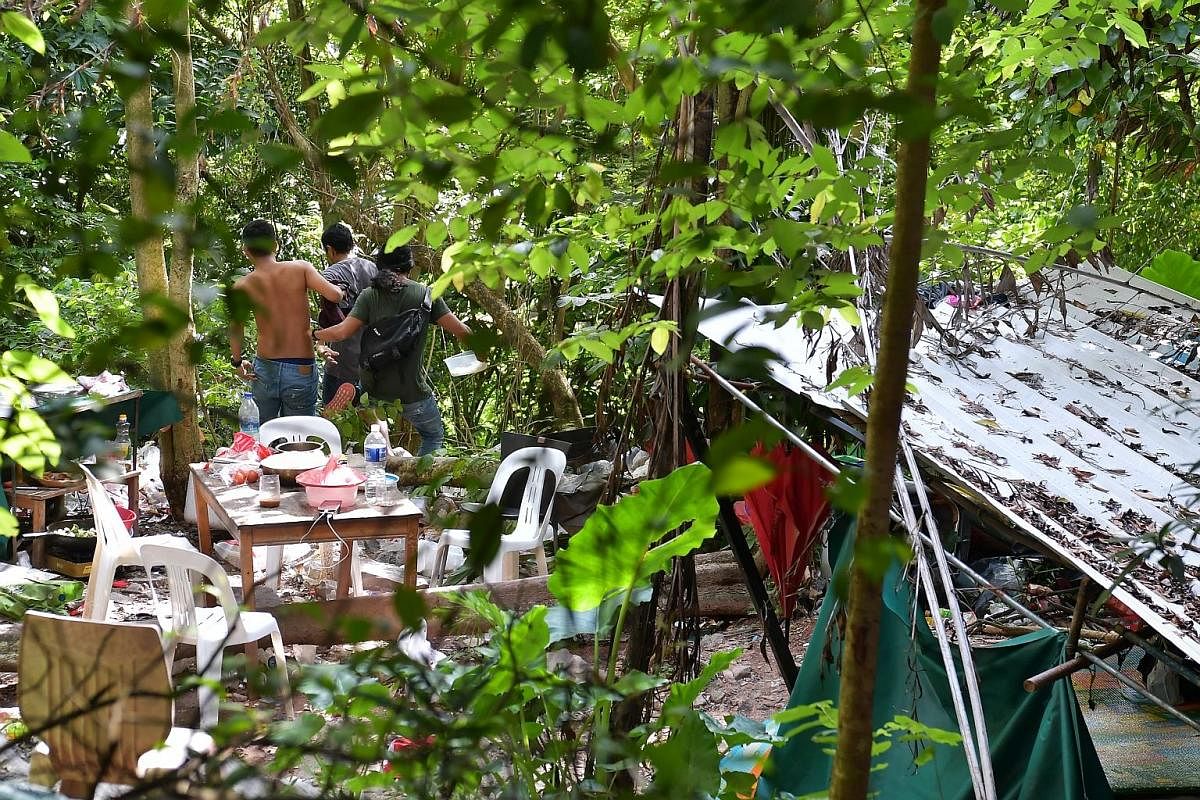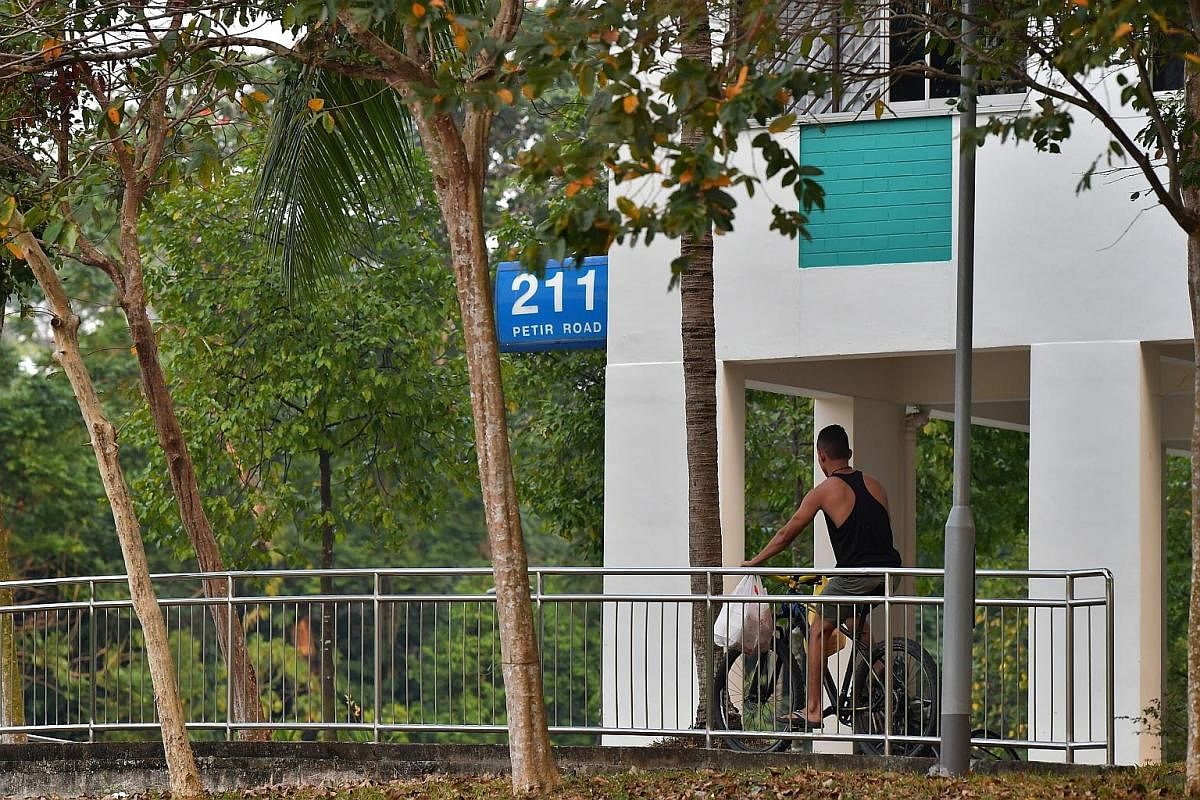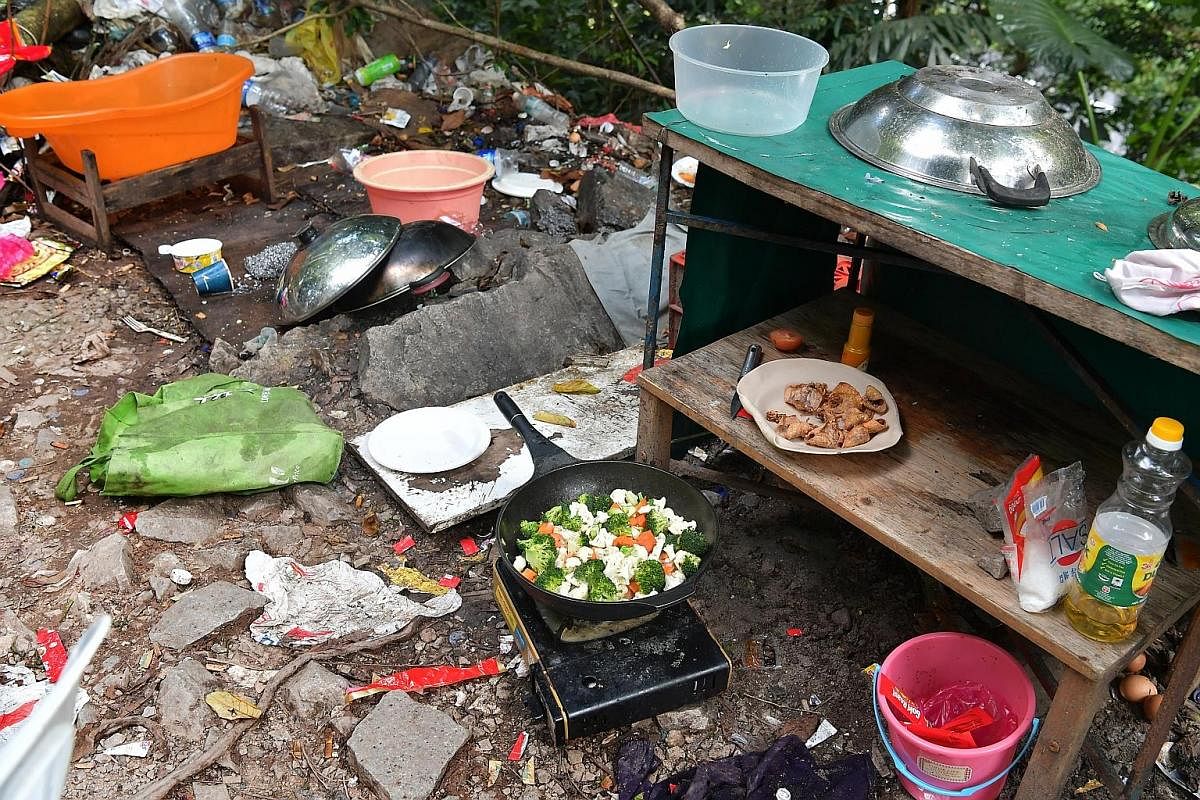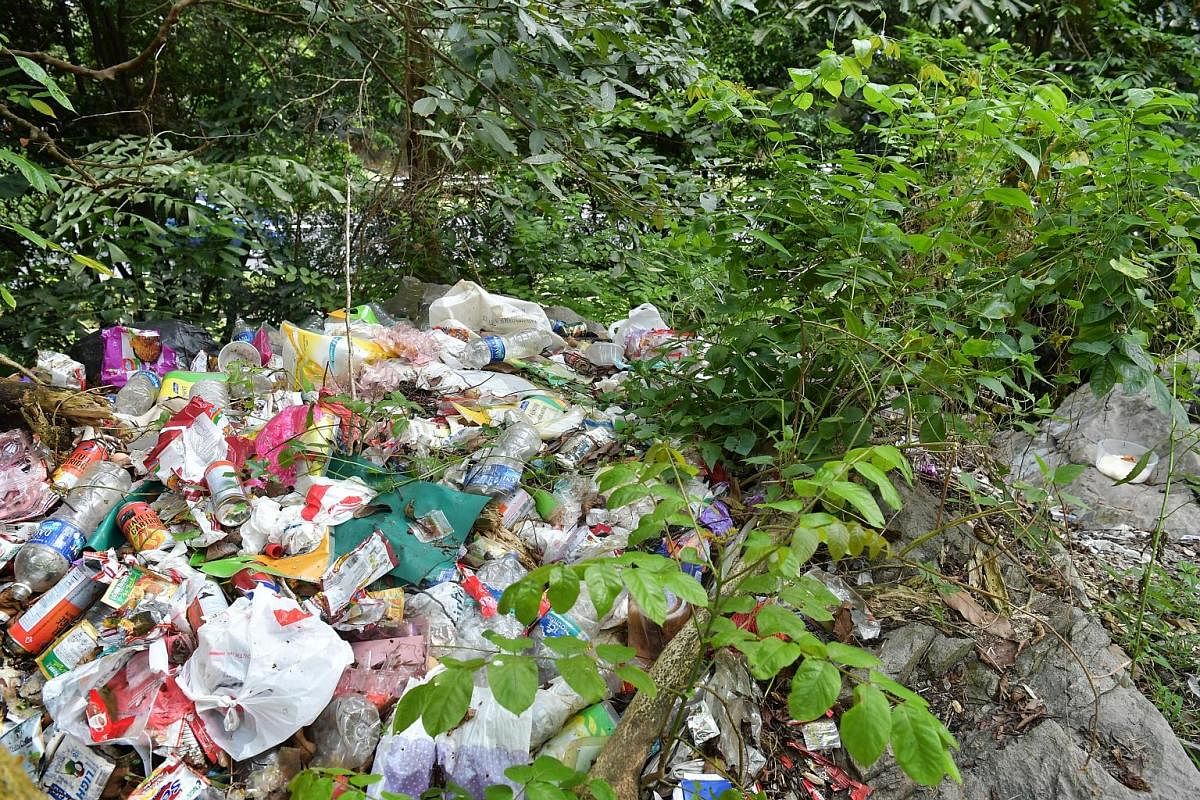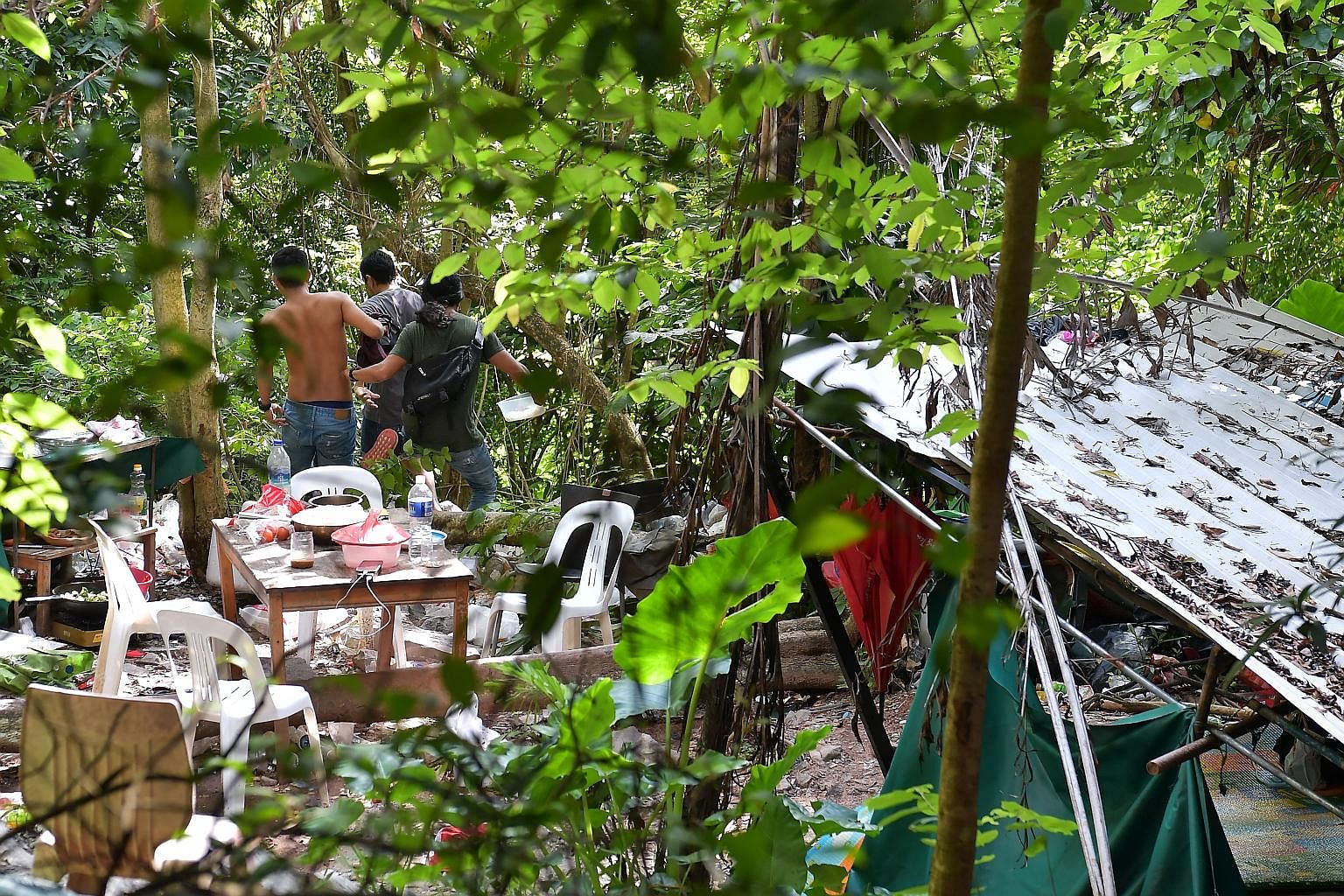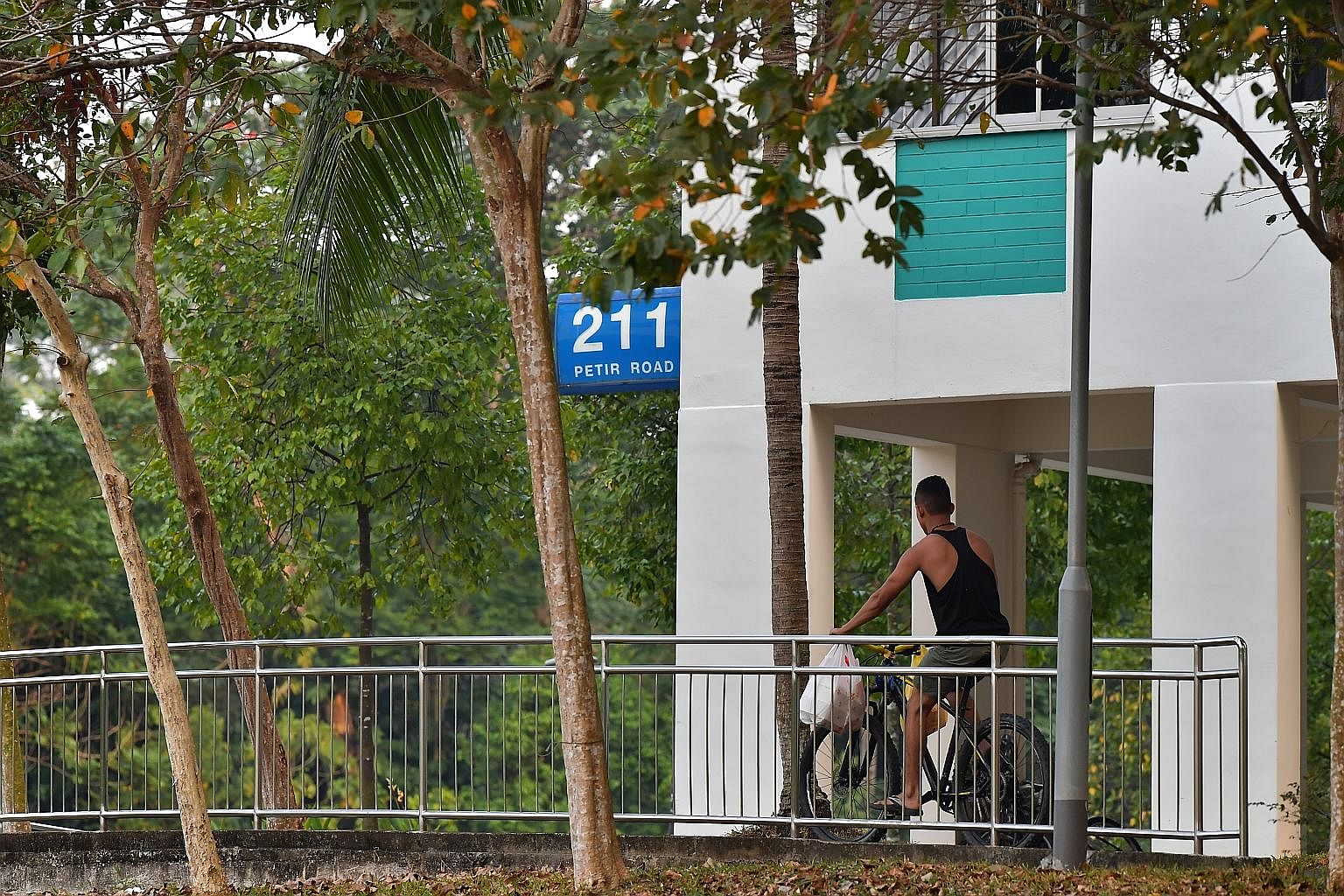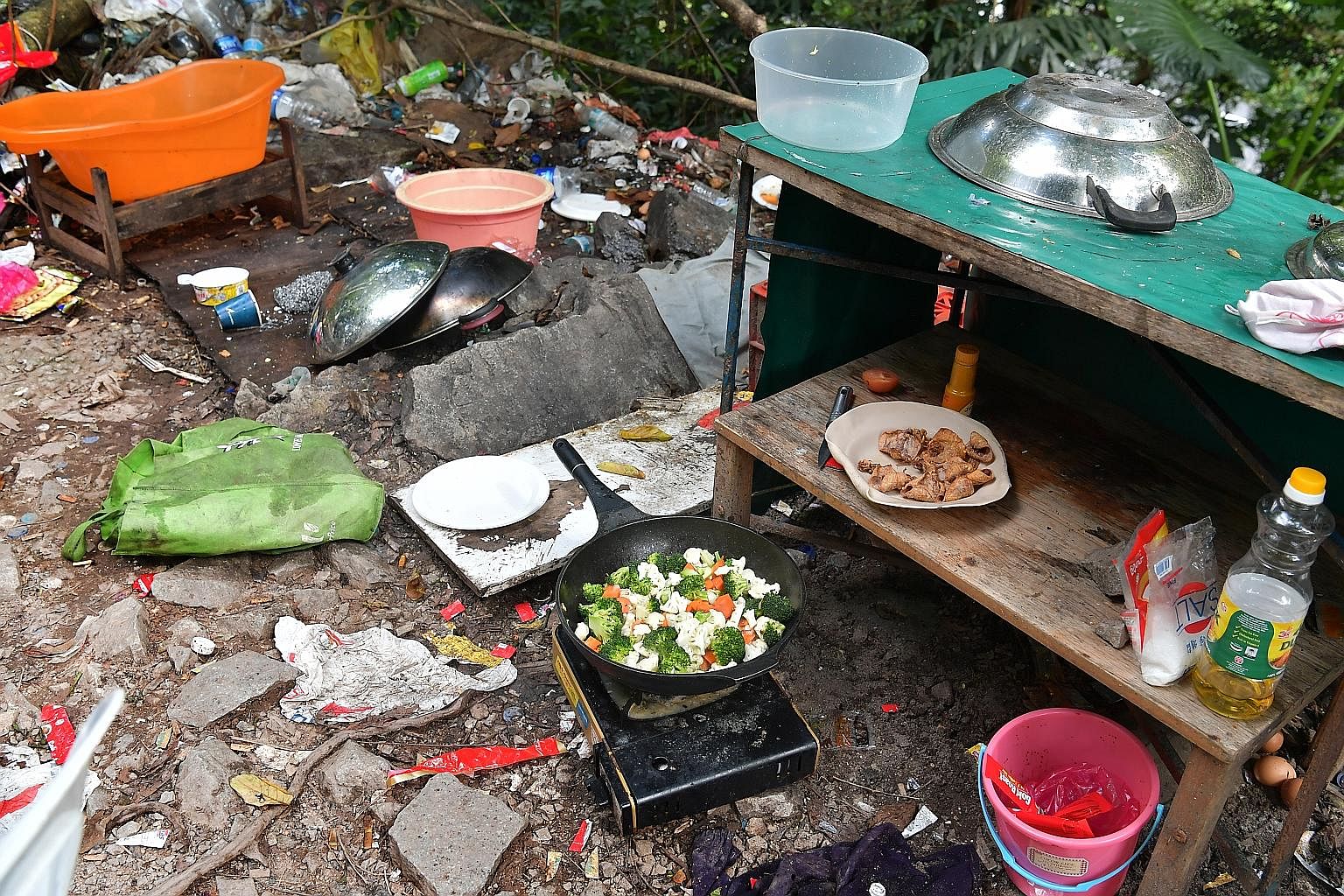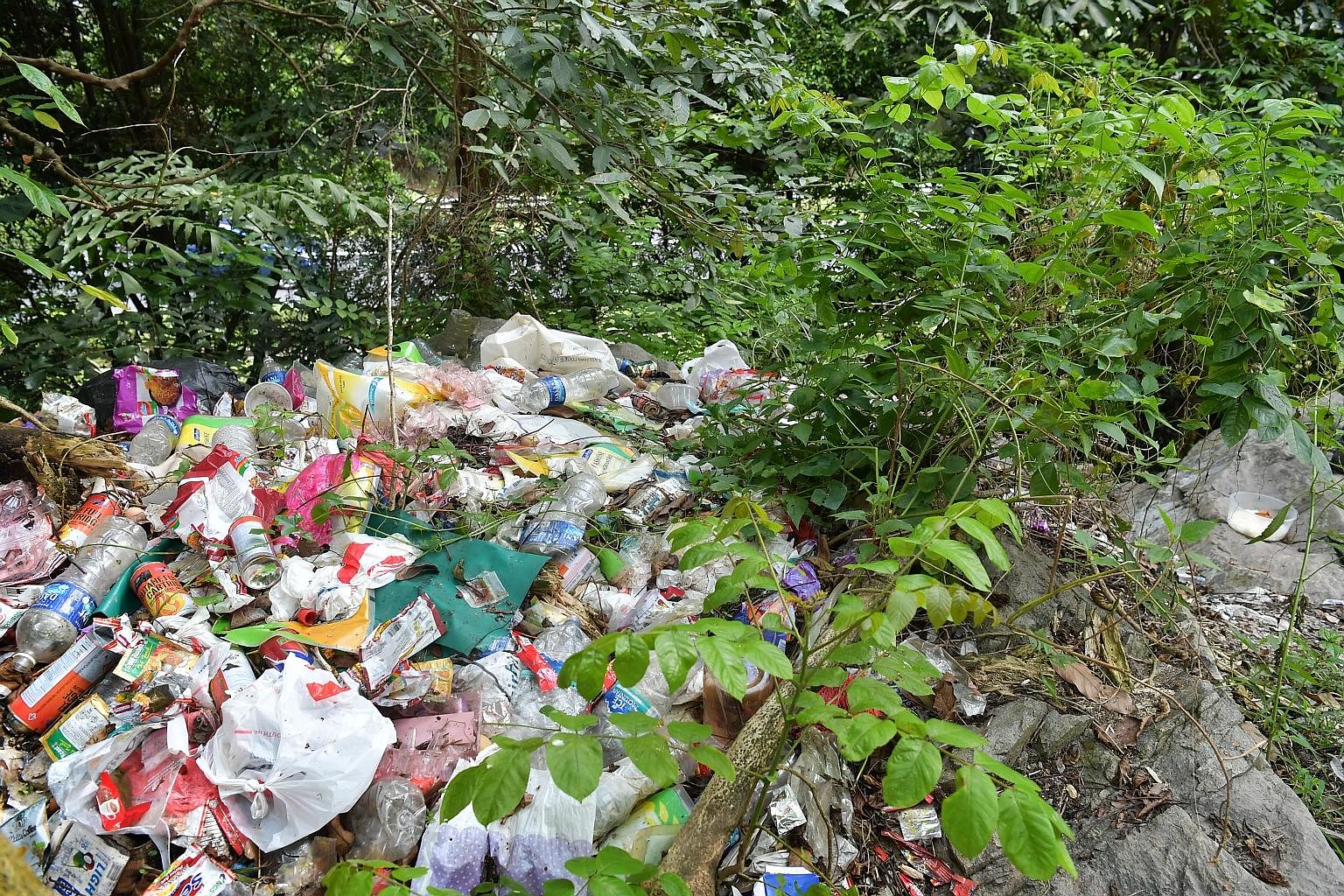Despite the rugged conditions, the sparse hideout had a king-size mattress and a zinc-roof shelter, eight plastic chairs, a table next to a cooking and washing area, and a makeshift cabinet to store food and luggage. The compound, twice the size of a room in an HDB flat, was filthy, with piles of rubbish everywhere.
What noise they made there was masked by the sound of passing vehicles on the KJE and the nearby slip roads.
After an hour, four occupants of the hideout returned. But they scrambled down the slippery slope when they realised they were seen.
In their escape, they left their mobile phones on the table and some ingredients for their mid-afternoon meal. There was a pot of cooked rice, and another containing coffee, placed on the table. A mixed vegetable dish was left steaming on a portable stove. We saw three knives at the mini camp.
From the bottom of the slope, they responded to our shouts. They said in Malay that they were "working" Malaysians who had recently "moved in". But that was all they were prepared to say before climbing up the slope in a menacing fashion. As we left, they took photographs of the ST team.
